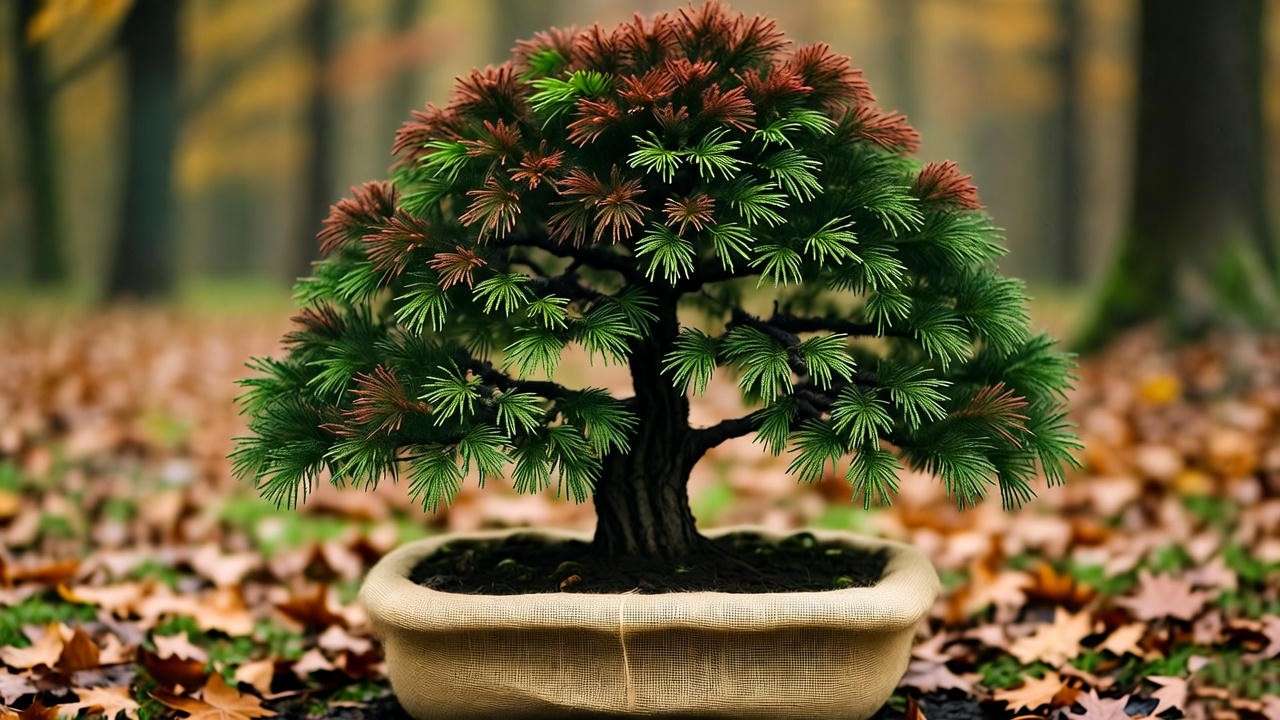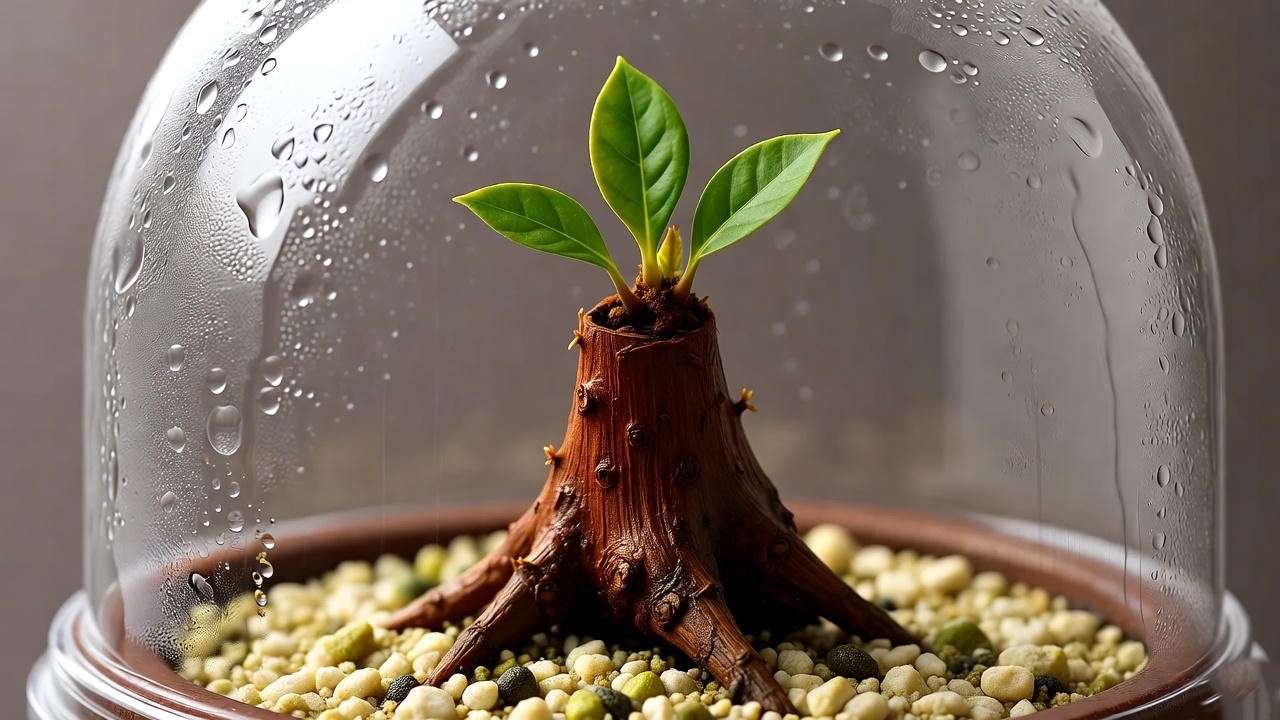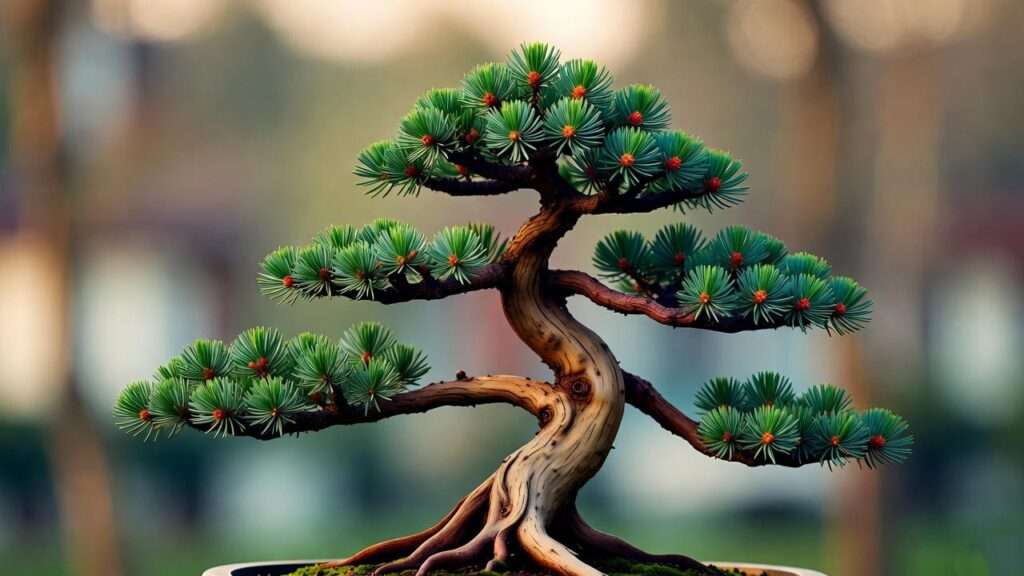Imagine a miniature forest in your home, its tiny red wood bonsai tree standing proud with vibrant reddish bark and delicate needle-like leaves—a living work of art that captivates and calms. Caring for a red wood bonsai tree is both a rewarding journey and a delicate balance, requiring knowledge, patience, and a touch of creativity. Whether you’re a beginner or a seasoned bonsai enthusiast, this guide will empower you to nurture your red wood bonsai tree to thrive for years. Drawing on decades of expertise from bonsai masters and insights from arborists, we’ll cover everything from watering to pruning, ensuring your bonsai flourishes. Ready to transform your space with this stunning miniature redwood? Let’s dive into the essentials of red wood bonsai care! 🌲
H2: Understanding the Red Wood Bonsai Tree 🌿
H3: What Makes the Red Wood Bonsai Unique?
The red wood bonsai tree, often crafted from species like the Coastal Redwood (Sequoia sempervirens) or Dawn Redwood (Metasequoia glyptostroboides), is a standout in the bonsai world. Its striking reddish-brown bark peels away in delicate layers, revealing a warm, vibrant hue that contrasts beautifully with its soft, needle-like foliage. Unlike other bonsai varieties, redwoods combine towering majesty in miniature form with surprising resilience, making them ideal for both novice and experienced growers. Their compact growth patterns allow for intricate styling, from elegant upright forms to cascading designs. Enthusiasts love the red wood bonsai for its ability to evoke the grandeur of ancient forests in a small pot, creating a focal point in any space.
H3: Origins and Cultural Significance
Redwood bonsai trees trace their roots to the towering forests of North America and Asia, where their full-sized counterparts have stood for centuries. In bonsai culture, these trees symbolize longevity, strength, and harmony with nature—values deeply rooted in Japanese and Chinese traditions. The Dawn Redwood, once thought extinct, adds a layer of historical intrigue, having been rediscovered in the 1940s. Incorporating a red wood bonsai into your collection connects you to this rich legacy, blending natural beauty with cultural depth. Whether displayed in a serene garden or a cozy living room, these bonsai trees inspire awe and mindfulness.
H2: Essential Care Requirements for Your Red Wood Bonsai 🌞
H3: Light and Location Needs
Proper lighting is the cornerstone of a healthy red wood bonsai tree. These trees thrive in bright, indirect sunlight for 4–6 hours daily ☀️. Outdoors, place your bonsai in a spot with filtered light, such as under a tree canopy or on a shaded patio. Indoors, a south-facing windowsill with sheer curtains works well, but supplement with grow lights in low-light conditions. Avoid direct, scorching sunlight, which can burn delicate needles, and protect your bonsai from drafts or sudden temperature drops. Rotate the pot every few weeks to ensure even light exposure, promoting balanced growth. For coastal climates mimicking their native habitat, outdoor placement is ideal, but indoor growers can succeed with careful attention to light.
H3: Watering Techniques for Optimal Health
Watering a red wood bonsai requires precision to maintain its delicate moisture balance 💧. Aim to keep the soil consistently moist but never waterlogged. Check the topsoil daily; if it feels slightly dry, water thoroughly until it drains from the pot’s base. Overwatering can lead to root rot, signaled by yellowing needles or a soggy base, while underwatering causes browning or drooping foliage. Use rainwater or distilled water to prevent mineral buildup, which can harm sensitive redwood roots. A pro tip from bonsai experts: Mist the foliage weekly to mimic the humid forest environment redwoods love, especially in dry indoor settings.
H3: Soil and Potting Essentials
The right soil mix is critical for red wood bonsai health. Opt for a well-draining, slightly acidic blend, such as a mix of akadama, pumice, and organic compost in a 2:1:1 ratio. This ensures proper drainage while retaining enough moisture for the tree’s needs. Repot young bonsai every 2–3 years in spring, refreshing the soil and trimming roots to encourage vigor. Mature trees may need repotting every 4–5 years. Choose a shallow, wide pot with excellent drainage holes to accommodate the redwood’s shallow root system. Glazed ceramic or natural clay pots enhance aesthetics while supporting airflow. Always sterilize pots and tools to prevent fungal issues.
H2: Pruning and Shaping Your Red Wood Bonsai ✂️
H3: Pruning for Health and Aesthetics
Pruning is both an art and a science for red wood bonsai trees, shaping their form while promoting health. The best time to prune is in early spring or summer, when the tree is actively growing. Use sharp bonsai shears to remove dead or overcrowded branches, improving airflow and light penetration. Pinch back new growth with your fingers to maintain the desired shape and encourage denser foliage. Avoid heavy pruning in fall or winter, as redwoods enter dormancy and heal slowly. Essential tools include concave cutters for clean cuts and knob cutters for thicker branches. Regular pruning not only enhances the tree’s beauty but also prevents disease by removing weak growth.

H3: Wiring for Structure
Wiring allows you to sculpt your red wood bonsai into stunning shapes, from formal upright to cascading styles 🪢. Use aluminum or copper wire, wrapping it gently around branches at a 45-degree angle to avoid damaging the delicate reddish bark. Start wiring in spring when branches are more pliable, and check monthly to ensure the wire doesn’t cut into the bark as the tree grows. A bonsai master’s tip: Focus on creating natural, flowing curves that mimic the tree’s wild counterparts. Remove wires after 3–6 months, depending on branch thickness, to prevent scarring. Patience is key—rushing can harm your bonsai’s delicate structure.
H2: Fertilizing and Nutrient Needs 🍃
Healthy red wood bonsai trees require regular feeding to thrive. Use a balanced, low-nitrogen fertilizer (e.g., 5-5-5 or 10-10-10) to support steady growth without overwhelming the tree. During the growing season (spring to early fall), fertilize biweekly with a diluted liquid fertilizer, reducing to monthly applications in winter when growth slows. Organic options like fish emulsion or compost tea are excellent for gradual nutrient release, while synthetic fertilizers offer precise control. Watch for signs of nutrient deficiency, such as pale needles (indicating nitrogen lack) or weak growth (suggesting potassium deficiency). Over-fertilizing can burn roots, so always follow package instructions and err on the side of caution.
H2: Common Problems and Solutions 🐛
H3: Pests and Diseases
Red wood bonsai trees, while resilient, can face pest and disease challenges. Common pests include spider mites, which leave fine webbing and stippled leaves, and aphids, which cluster on new growth, sucking sap. Scale insects may also appear as small, waxy bumps on branches. For treatment, start with neem oil or insecticidal soap, applied weekly until pests are gone. Ensure good air circulation to deter infestations. Fungal issues like root rot, often caused by overwatering, manifest as soft, blackened roots, while needle blight shows as browning foliage. Prevent these by using well-draining soil and avoiding waterlogged conditions. If rot occurs, trim affected roots and repot in fresh soil. Regular inspections and clean tools are key to keeping your bonsai pest-free.
H3: Troubleshooting Growth Issues
Yellowing needles, stunted growth, or drooping branches can signal trouble. Yellowing often stems from overwatering or poor drainage—check the soil and reduce watering if soggy. Browning needles may indicate underwatering or too much direct sun; adjust your routine and move the tree to filtered light. Stunted growth could point to nutrient deficiencies or cramped roots, so fertilize appropriately and consider repotting. A real-world example: A bonsai enthusiast revived a struggling red wood bonsai by repotting it in a well-draining akadama mix and misting daily to boost humidity. Monitor your tree weekly, and act swiftly to correct issues for a thriving bonsai.

H2: Seasonal Care Tips for Red Wood Bonsai ❄️☀️
Red wood bonsai trees require tailored care through the seasons to mimic their natural cycles. In spring, encourage new growth with light pruning and repotting if needed, using fresh, acidic soil. Increase watering as growth accelerates. In summer, protect your bonsai from intense heat by providing afternoon shade and misting foliage to maintain humidity. Check soil moisture daily during hot spells. In fall, reduce watering as growth slows, and remove dead needles to prepare for dormancy. In winter, shield outdoor bonsai from frost with burlap wraps or move them to a sheltered spot. Indoor trees need cool temperatures (50–60°F) and grow lights to compensate for shorter days. A consistent seasonal routine ensures your red wood bonsai stays vibrant year-round.

H2: Advanced Techniques for Long-Term Success 🌟
H3: Propagating Red Wood Bonsai
Propagating a red wood bonsai tree is a rewarding challenge. Using cuttings is the most reliable method: In spring, take 4–6-inch semi-hardwood cuttings from healthy branches, dip them in rooting hormone, and plant them in a moist, well-draining mix of sand and perlite. Keep cuttings in a humid, shaded environment, misting daily. Roots may develop in 6–12 weeks, but success rates vary due to redwoods’ slow rooting. Seeds are another option, though germination can take months and requires stratification (cold treatment). Patience is crucial—successful propagation creates a new generation of bonsai to nurture.

H3: Creating a Show-Stopping Display
Elevate your red wood bonsai’s aesthetic with thoughtful styling. Popular forms include formal upright, mimicking a towering redwood, or cascade, evoking a cliffside tree. For a forest style, group multiple bonsai in a single pot for a miniature grove effect. Pair your bonsai with accent plants like moss or small ferns, or add decorative rocks for a natural look. Display on a wooden stand to highlight its elegance. A bonsai master’s tip: Use subtle asymmetry to mimic nature’s imperfections, creating a visually captivating centerpiece.

H2: FAQs About Red Wood Bonsai Care ❓
- How often should I water my red wood bonsai?
Water when the topsoil feels slightly dry, typically every 1–2 days, depending on climate and pot size. Ensure thorough drainage to prevent root rot. - Can a red wood bonsai survive indoors year-round?
Yes, with bright, indirect light and high humidity. Use grow lights and mist regularly to mimic its natural environment. - Why are my bonsai needles turning brown?
Browning may result from underwatering, excessive sun, or nutrient deficiency. Adjust watering, move to filtered light, and fertilize appropriately. - How long do red wood bonsai trees live?
With proper care, they can live decades, even centuries, mirroring the longevity of their full-sized counterparts. - What’s the best soil for red wood bonsai?
A mix of akadama, pumice, and organic compost (2:1:1) provides ideal drainage and nutrients. - How do I protect my bonsai in winter?
Move outdoor bonsai to a sheltered area or use frost blankets; keep indoor bonsai in a cool, well-lit spot.
H2: Expert Tips for Thriving Red Wood Bonsai 🌱
- Mimic natural humidity: Mist your bonsai daily or place it on a humidity tray with pebbles and water to replicate its forest habitat.
- Use quality tools: Invest in sharp, sterilized bonsai tools to prevent damage and disease during pruning or wiring.
- Monitor root health: During repotting, inspect roots for crowding or rot, trimming only 20–30% to avoid stress.
- Experiment with styling: Try subtle jin (deadwood) techniques to add character, as advised by bonsai master John Naka.
- Time-saving hack: For busy owners, self-watering pots can maintain moisture during short absences, but check drainage to avoid overwatering.
Conclusion
Nurturing a red wood bonsai tree is a journey of patience and artistry, yielding a living sculpture that brings nature’s serenity into your home. By mastering light, watering, pruning, and seasonal care, you can ensure your bonsai thrives for generations. Apply these expert tips, from precise fertilization to creative styling, to cultivate a vibrant, healthy tree. Share your bonsai journey in the comments, or ask questions to deepen your skills. With dedication, your red wood bonsai will become a cherished centerpiece, reflecting both nature’s beauty and your care. Start today—your miniature redwood awaits! 🌳













